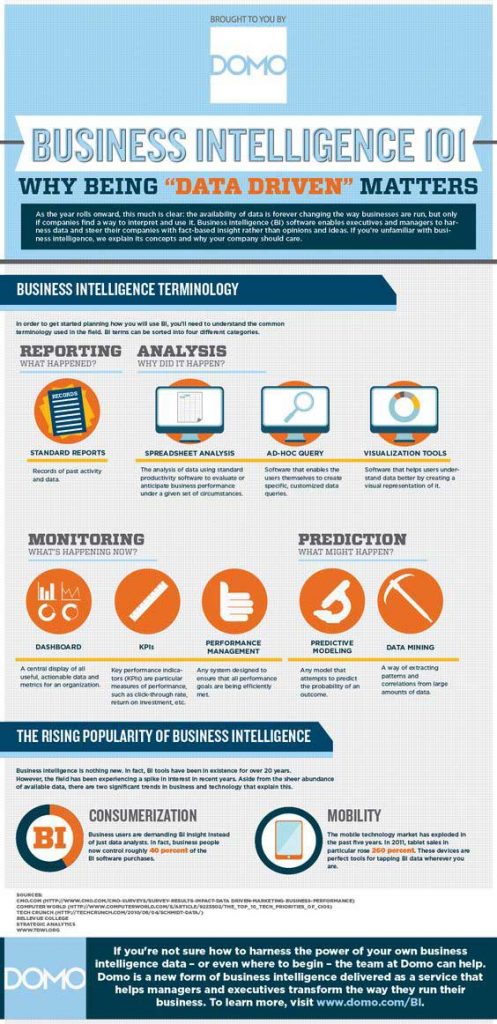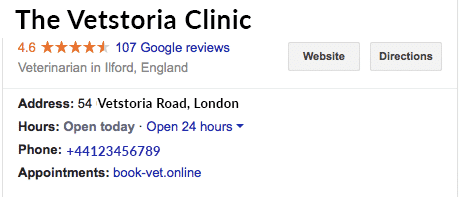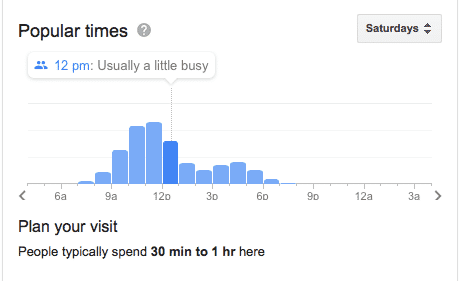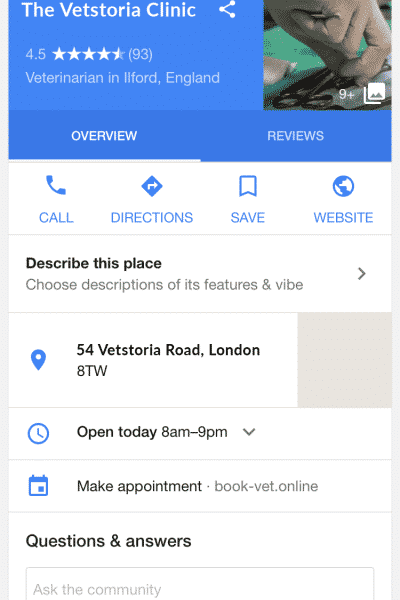Vetstoria Exhibited at VMX Orlando 2020

We are sending two of our very best, Julien and Leah, to represent us at VMX in sunny Orlando, FL between 18th-22nd of January! The Belgian/British duo will hopefully add a special flair to the 700+ strong vendors at one of the most exciting veterinary conferences in the world.
The pet industry is experiencing a renaissance, driven by millennial pet owners that are most willing to spend, largely contributing to a record of $72 Billion spent in the USA in 2018. Not every practice is equipped with the right tools to capitalize on this boom, which is why we are here to bridge the gap in technology.
Come and find us at Booth 2117 - we'll be demonstrating how our real-time scheduling and digital marketing features can help veterinary practices capture new clients and relieve pressure for their staff.
You can also book a 10-min meeting with us so we can make ourselves available to you at the time of your choosing. See you there!
About Vetstoria
Vetstoria's real-time appointment scheduling platform helps independent veterinary practices acquire more clients, increase client satisfaction, and better manage time. The platform integrates with over 20 practice management systems to provide real-time online scheduling, as well as smart triage and digital marketing capabilities.
Is Your Practice Rife with Office Politics?

“Male vets are hard to come by — get a good-looking one in the clinic, everyone is more than happy to help him! But when it’s just the rest…” Leah Paskel, RVN begins the discussion on office politics.
Who would have thought that a high-octane work environment like a veterinary practice can be rigged with human office politics? Apparently, disputes and tensions at the practice do not usually stem out of professional reasons but personality clashes. Toxic and dysfunctional work culture can be super intensified if the management decides to turn a blind eye.
Free Download: Veterinary Employee Happiness Survey Template
In this article, our very own Leah Paskell, Victoria Smith and Edel Burke who have all been nurse-turned-managers reflect on this topic and offer insights.
“Who took my pen?”, a question like this one can foreshadow an imminent display of authority. Popular pre-texts can also include dirty dishes and gossip; if you hear someone say that someone else might have done something, a piece of rumour ensues and you are now in a game!
Is there even time for this? The answer is no but people can still prioritise office politics above other tasks. “We don’t have enough time to do all the things we want to do, so when tasks like doing dishes get deprioritised and someone else gets to them first, the internal questions start like ‘why should I do it when she hasn’t?’”, Leah remembers when she had to mitigate a staff crisis involving 6 unwashed cups.
So, why do it? The simple answer is, hierarchy and progression whether it is effective or not. Humans have always lived in the context of meeting each other to interact and seek advantages. So by definition, office politics should serve those who are equipped with the necessary people skills to build their tribal network. However, it is largely detested and loathed upon.
“It is usually juvenile. It occurs when there’s poor communication, high levels of stress and a need to assert power. A simple exchange between staff members when someone is being trained can be used as a source for gossip that someone is extremely patronising.” said Victoria Smith, RVN who like Leah, left the veterinary profession to work as a consultant at Vetstoria.
“Office politics was the no.1 reason why I became a locum back in the day. That meant I got to make more money and only work nights — so I wouldn’t have to be around that many people.” says Edel Burke RVN, our Australia-Asian manager.
“The dynamic between doctors and nurses has always been tricky even in human medicine. At some practices, the nurses are also pulled to roles they feel over qualified and trained for such as receptionist tasks. Most managers are reluctant to employ and pay for more receptionist to deal with the overwhelming workload front of house so the nurses are really stretched. You can see how this could create discontent which is often a precursor for trouble.”

Does the management play a role in perpetuating office politics?
“Office politics can be a by-product of not being heard,” says Victoria. The repeated conflicts can be so immature that the management decides to not get involved simply because they are “fed up”. What’s interesting and industry-specific about veterinary practices is that many managers do not come from a business management background — many progressed into the role from nursing or having been the receptionist for a long time who on occasion fail to recognize the need for change.
“The veterinary industry has always been behind in every sense — operational and practical. We are an evidence based profession and no evidence means it’s a bad idea. The problem is, we need to do things to gather the evidence so if the management does not recognize the need for change and take action, there won’t be any evidence to work with. Don’t you see how bad of a vicious circle this is to break?” says Leah.
So what can be done?
“Through the tiredness, it’s easy to jump on board the ‘blame train” rather than seeing the bigger picture. More understanding and education of everybody’s roles is necessary.” says Leah.
Office politics is a reality that we face in every profession, and avoiding it altogether risks not generating influence for a democratic, healthy feedback loop within the company structure. However, good politics can be achieved so you can get what you want without harming others.
Hubspot’s put together a brilliant article “The Drama-Hater’s Guide to Deal with Office Politics” which can be roughly summarized to the below points:
- Make decisions transparently and consistently.
- Don’t be exclusive with your professional relationships.
- Identify the sources of office politics and stay away as much as you can.
- If all else fails, just be direct.
As a bonus, We’ve compiled a list of recognizable tropes within the practice. Which one describes you best?
“Of all deceivers fear most yourself!” — Søren Kierkegaard
- The Office Bully — tantrums throwers who yell and insult
- The Backstabber — nice to your face but attack your effort covertly to manipulate
- The Queen Bee — the indispensable one who thwart the growth of others
- The Gossip Monger — really good at adopting a “confidential” tone
- The Habitual Complainer — tend to focus on things over which they have no influence
Office politics will never go away and if you are the type who’d strive to make positive changes to your work environment, we believe that changes should come from within. Seek out technological solutions which may alleviate stress and streamline the workflow of the practice, which consequently reduces frictions among staff. Discover how Vetstoria has simplified the daily lives of thousands of veterinary staff worldwide. Visit our website to learn more.
Can data help veterinarians optimize their veterinary marketing performance?

The quality and completeness of data can provide any veterinary practice with a deep insight into the lives of their existing and target customers. But how can veterinary clinics use this data to optimize their veterinary marketing performance?
Data-driven marketing isn’t as difficult as it sounds. Setting all the necessary tools up to ensure your marketing efforts aren’t wasted will take some time and effort. But this approach will allow you to reach the right customers at the right time, a marketing solution that will work for your clinic.
We have gathered all the best information to ensure that vets can use this data-driven approach to improve their marketing performance. Read on to find out more.
Free Download: Digital Marketing Guide for Vet Practices
1. What is data-driven marketing?
Data is an extremely valuable resource that vets can use to improve their marketing efforts. Data-driven marketing is a marketing strategy that uses data collected from customer interactions and engagement to better educate and sell to them on an individual basis.
Once you understand why, where, when and what your customers engage with, vets can optimize veterinary marketing, amend the timing of ads, where the ads are shown and the audience they’re shown to.
Watch this video to know exactly how using data can help launch a successful marketing campaign.
1.1 Does data-driven veterinary marketing work?
This strategy is hugely popular due to the deep insight that can be obtained and of course, its ability to improve marketing efforts.
Here are just some of the amazing statistics on how data can impact your marketing efforts:
- A study from Forbes found that 88% of marketers used data to improve their understanding of each customer
- 69% of marketing data is used to focus on better offers, messages and content.
- 53% of marketers say said that data makes them more customer-centric
- 75% of companies see an increase in consumer engagement with data-driven marketing
- 87% of marketers say that data is the most underused asset within marketing
Using this strategy is a great opportunity for your clinic to improve their marketing return on investment (ROI) and personalize your marketing efforts. It will take time and effort to build, but once set-up you can see what works best for your clinic and invest in a marketing solution that works for you. Check out this infographic to understand why being data-driven matters.

2. Data-driven veterinary marketing strategies your clinic needs
If you still have no idea how your clinic can use data then fear not. Below are specific examples of data-driven strategies you can use for your clinic.
2.1 Retargeting
Retargeting allows businesses to reach out to customers who have previously shown an interest in a particular product or service. This allows businesses to follow potential customers wherever they are.
Retargeting works by placing a small piece of code on your website which tags a user when they leave. The next time the user browses the web, your advertising can retarget them.
This strategy is highly effective because you can focus your efforts on customers who know of your veterinary practice and have shown an interest in your services.
Veterinarians can leverage this technology by offering potential customers relevant offers they want and it can all be performed on Facebook. A good example of a Facebook marketing campaign would be to remind owners to visit the vet.
More than a third of cat owners and 15% of dog owners failed to visit the vet within the last year. Gently reminding owners to visit your clinic for a check-up could bring in customers to your practice.
Create a list- Creating a list of existing customers (using the customer email database) or website visitors (by installing the Facebook pixel on your website) to retarget is an important first step. This needs to be hyper-targeted to the audience you wish to reach in order to maximize response to the advertising
Creating an e-Book- You can create an e-book on pet care which people can access once they give their email address. Do ensure you ask permission to use their data for future marketing purposes when they download the book. This is a crucial tip for your Facebook Ads campaign to succeed.
Upload the list to Facebook’s custom audience manager- Once the list is complete, import the list into Facebook’s audience manager to match email addresses with Facebook profiles. Leave this for a few hours to generate enough of a target audience to work with.
Determine the destination URL- You can create your Facebook ad campaign by clicking “Create Ad”. Here you can decide if you want to send customers to your homepage or anywhere else on your website.
Segment your Ads- Here you can select your target audience and the geographical location. You can also segment your audience by interest, behaviour, age and other settings that will allow your ad to be hyper-targeted.
Set your budget- You should already have prepared a budget for this campaign. Facebook ad campaign costs will depend on the duration they run for and the breadth of the audience that you are targeting. In the settings, set a lifetime budget for the duration of your ad campaign and adjust as you go along.
Create your ad-. An important detail to know about this is that the image size for ads is 1200 x 628 pixels and images can only contain 20% text, the headline underneath the image can only be 25 characters long and the text above the image is 90 characters long. Each ad can have 6 associated images. This helps you test and optimize your campaign depending on what users respond to.
Monitor your progress- Now you are launched, you just sit back and optimize where you need to.
This infographic is the ultimate guide to Facebook ad targeting campaigns and is what you need to launch an effective Facebook ad marketing campaign for your veterinary practice. You can read more about it here.

2.2 Landing pages
A landing page is the web page that your customers first see when they visit your website. For most visitors this will be your home page, but it could be the blog post, contact page or services page, depending on how you are advertising your site. You can create specific landing pages and optimize them for different segments or search queries, so customers see the most relevant page for them.
If search engine optimization (SEO), pay per click (PPC) or other lead generation techniques are carried out correctly, you will be driving a serious amount of traffic to your website.
Converting website visitors into paying customers all depends on the relevancy of the landing page. Below are some useful tips to ensure your landing page (the page they click through to) is relevant to your customers.
A strong header: This is the first thing a visitor will see. This should be a strong and compelling header that immediately attracts attention. This should be clear in text and be congruent with the rest of the text on the page. If not, potential customers will leave.
Clear call-to-action (CTA): Your CTA should be featured at the top of the page stating “Book Now” or “Book Online” using online booking software such as Vetstoria to integrate these into your patient management platform. This should be prominent, in a contrasting colour and state the action customers need to take to proceed.

Mobile responsive: Most individuals will use mobile for web browsing and other needs. They will ignore websites that don’t respond or work properly on mobile.
Optimized page settings: The URL and title of the page should clearly and succinctly inform the visitor of the contents of the page. The meta description (the short description on Google search results that explains the page’ content) should also contain keywords and summarize what visitors can expect on the page.
Nice images and visuals: The graphics need to be relevant and interesting to keep visitors on your website. Creating your own graphics would be a great way to stand out from the competition.
This infographic provides more information on how you can optimize your landing page.

2.3 Targeted email campaigns for effective veterinary marketing
A targeted email marketing campaign can allow you to group your desired target audience together and send them specific content. But how do you build a targeted email campaign?
Building a hyper-targeted email campaign
Define your goals: You must determine the purpose of this email campaign. Upsell opportunities? Boost your clinics awareness in the local community? Define what you want to achieve.
Did you know 22.6% of a veterinary practices business profits comes from medicine sales and 61% of veterinarians deal with companion pets? An email campaign educating customers on symptoms for common illness in cats and dogs, along with a medicine from your clinic that can help could be a goal for your campaign.
List segmentation: By targeting specific audiences, you can drive this group to specific content you want them to see. You can target customers based on animal type, age, location and hobbies, for example, 81% of primary pet carers are female. This would be a good place for you to start.
Creating the right content: Once you have your target audience, what do they want to see? Your texts, images, CTAs and email layout should be tailored to this demographic. Delivering the right content to the right audience can lead to outstanding results.
Measure and optimize: This campaign will teach you what people responded to. Observing open and clickthrough rates will help you understand what works and what does not.
3. Top tips to build the ultimate data-driven strategy
To help you develop the ultimate data-driven strategy, keep these few tips in mind:
Stick with it: You must be ready to dedicate the time and resources necessary for this strategy to succeed.
Integration & automation: You are going to be dealing with a lot of data and this can overwhelm anyone. Manually, this task cannot be completed. By integrating new marketing tools and technologies, you can spend less time looking at data and more time using this to create highly personalized campaigns. Google Analytics, MailChimp and Crazy Egg are some examples of tools you can get started with.
Collaborate effectively: High-quality data is a must for this strategy to work. Different departments will use data they collect for business goals. Sharing this data throughout your clinic is crucial to ensure its managed correctly.
Keep an eye on the competition: Learn what strategies other veterinary clinics are employing and identify what works well for them to give you some inspiration. Implement new data-driven veterinary marketing techniques into your strategy. This ensures your strategy is up-to-date and always changing.
Monitor, optimize, repeat: You’ve done the hard work and set up the marketing campaign. Now you optimize. The tools should be in place to analyze data in real-time and determine the effectiveness of your marketing campaign. You can learn what works, what doesn’t and optimize your campaign accordingly. These learnings will ensure future campaigns are even more successful.
Use Vetstoria: Our real-time booking software is the first piece of software you need to build information about your customers. This software automatically schedules appointments into your management software, reducing admin. This gives you and your receptionist time to focus on other efforts, like marketing.
Vetstoria also requires customers to answer pre-consultation questions. With this information you can determine what service your customer may need, saving you 10 minutes per appointment. Clinics can use this data to provide a better service to clients and foster better relationships.
3.1 Personalized veterinary marketing
Being able to reach the right people, with the right message, at the right time is essential. Data-driven marketing allows you to do exactly this. Customized campaigns can allow vets to convert potential customers due to the relevancy of the message and a deep understanding of their customers.
3.2 Improved customer experiences
Data can allow you to conduct surveys to determine areas of your service that need improvement. This allows you to focus on aspects important to your customers and to improve their experience.
4. Conclusion
Using data in your veterinary marketing strategy is the only way to make informed decisions on how to promote your veterinary practice.
Delivering targeted messages based on deep insights will help you stay ahead of the competition and promote your practice.
Vetstoria’s real-time booking software can reduce admin giving you and your receptionist time to focus of building deep insights into your customers.
By understanding what your customers want, when and where they want it, you can provide a much better service.
Are there really no veterinary nurses over the age of 30?

“Are you not smart enough to be a vet?” – question veterinary nurses are sick of being asked. As vet nurses receive growing recognition in the industry, the general public still has a long way to go before they fully understand how vets and nurses have equally important roles to play in animal health care. The internal hierarchy of most practices also present opportunities for nurses’ contributions to be overlooked or undervalued, making it hard to retain talents in the industry.
As Veterinary Nursing Awareness Month draws to a close, our very own Leah Paskell RVN reflects on her time as a veterinary nurse which as you can guess, encapsulates the good and the bad. I wanted to explore her motivations in moving into the tech sector after achieving many career highlights such as being a regional manager for 8 practices. Surely, she’d want to stay and guard the life that she has built with blood, sweat, and tears?
Free Download: Employee Happiness Survey Template
The beauty in any job satisfaction lies in balance and that is very difficult to achieve in veterinary nursing. Although positive cultural shifts towards greater wellness and support for nurses can be seen in the industry, the changes are just not happening quickly enough. My interview with Leah exposes shocking realities which many have grown blasé about and that’s extremely worrying.
“There are not many nurses in their 30s. Some get married and have kids so they sort of forsake their passion, regretfully.” Although Leah no longer works as a veterinary nurse, she continues to look out for the pet owners and their pets by making the industry more efficient and the communications less impeded. She offers priceless insights and ideas about how vet nurses can be better valued in the age of difficult talent retention. Her personal story of leaving the nursing profession can hopefully inform and inspire practices around the world to rethink the way vet nurses are currently positioned and give much-needed praise for our unsung heroes.
Full interview below:
1. How did you get into vet nursing and what do you think about the job in general?
I left school and immediately went into vet nursing – something I knew I wanted to do when searching and deciding on a career. The job, in general, is tiring/borderline exhausting both mentally and physically. On your feet, all day, running around and being pulled in ten different directions. I did not think I would have a back problem in my 30’s but then that’s what you get for lifting 65 kg dogs with one other person! Things start to ache and hurt after your twenties from spending 80% on the floor and doing a lot of cleaning!
2. You became a practice manager after working as a nurse, how did you manage that?
I would say a common career move is from RVN – Clinical Coach – Head Nurse and/or Practice Manager. These roles can vary so much depending on the clinic. Some head nurses/PMs will focus solely on admin work and no longer do clinical tasks whereas others will do both. I’m pleased to say the profession is more recognized compared to when I started. There are more nurses considered as ‘clinical leaders’ and who are now buying into practices. The recognition is coming!
3. It’s notorious that nurses don’t stay in their jobs. What could your practice have done to persuade you to stay?
I loved my job! I specialized in emergency and critical care (an animal accident and emergency center) but this meant working nights. I did this for ten years because I felt valued for doing what I trained to do and not utilizing my mopping abilities! It is an ongoing joke with my friends that we are trained to be ‘glorified cleaners’! Had I felt valued in general practice as I did in ECC I likely would have gone back to normal working hours.
4. There’s a common misconception that a vet is more important than a nurse. What are your thoughts on that and on its implications?
The public doesn’t know that the nurse is taking the x-rays, taking the blood sample, placing IV’s or even stitching up their dog who was in a fight with barbed wire! They believe the vets are doing all of this and more when in reality a nurse is just as present. I find it annoying when I am asked why I am not a vet. I believe one is not more important than the other – they are different roles and complement one another. There is a team looking after the patients from receptionists to assistants to nurses and vets.
Implications of the lack of education are massive on a nurse – mental health and burn-outs are the biggest. I have worked solidly for 15 hours, no food or toilet break – surviving on biscuits alone looking after critically sick patients. They recover and go home only to then not get so much as a thank you from the owner. Not all clients are like this but there have been a few too many.
5. We know there are disproportionately more women in nursing than men, how do you think the vet industry is responding to social issues like the gender pay gap and the MeToo movement
For me as far as I am aware vets and veterinary nurses are paid on experience and certification. I think as an industry there is very little if no gender pays gap. It is predominantly female-dominated however I have noticed an increase in male nurses over recent years. Having gone from knowing none to five is pretty good!
6. Would you recommend your own career path to fellow nurses who are thinking about leaving their jobs?
Finding a different path in veterinary nursing is an option now. Emergency and critical nursing, exotic nursing, referral nursing either surgical or medical and oncology. Alongside all of these – certificates in advanced nursing are also options. Becoming a lecturer, regional manager for a corporate or even a dog walker are other career paths. I have met nurses who hate their job and no longer do it effectively because they no longer care so that’s definitely a sign that they should branch out since they’ve acquired the transferable skills.
What I love about Vetstoria is its potential and the people I work with. It’s completely different to practice life – relaxed no politics and well managed. At the end of the day, I am not responsible for a life in the office – that is very refreshing!
7. In an ideal world, how would nurses want their working environment and how would they want to be valued?
A thank you goes a long way when you are hungry and haven’t peed in 12 hours. Being called upon to place a feeding tube or IV because you are good at it and be acknowledged for your skills and hard work. I have worked with people before that will spend minutes finding a nurse to clean the urine instead of doing it themselves despite walking past the mess five times. Being asked for an opinion on a patient’s treatment plan and having a client speak to you instead of refusing because you are not a vet.
8. Anything else you’d like to tell us?
Despite all of this I am proud to be a veterinary nurse and for enduring all the bad bits. The profession is on the way up and education is improving. I do believe that one day the title will be protected and this will be a career path more recognized and valued than it is now. I have met some amazing people during my career and ones that I will continue to stay in touch with. I will never regret choosing vet nursing as a career (not on a daily basis anyway!).
Google My Business for Veterinary Practices

Google My Business is an excellent way to find new customers for your practice. But setting up your page correctly and ranking high on google can sometimes seem overwhelming. We’ve created this post to walk you through the important features that will help boost your appointments!
Free Download: Digital Marketing Guide for Vet Practices
What is Google My Business?
Google My Business displays some key information about your practice as a snippet on the google results page for your area. It’s a free tool – and also allows you to monitor the performance of the listing. This makes it a lot easier for you to test ideas for increasing your bookings.

Google my business can display customer reviews, address, opening hours, contact details, website URL and directions to your practice. Google My Business can also provide a direct link to your online booking widget on your website. Clients reach this by clicking the ‘appointments:’ section on the listing itself. Google is the most important directory your clinic could be listed on. That’s why you should focus on boosting your SEO and rising up the google rankings.
Features
There is also a ‘Popular Times’ feature that shows when your clinic is busiest. This drives customers to visit during quieter hours so they are more likely to schedule appointments for your quieter times.

Google My Business offers you a chance to show off your unique personality and branding through your interactions with your customers. This video from Google reflects the way in which you can use Google My Business to shape your clinic’s identity:
How will this help gain clients?
As our studies show – 17% of bookings made online are made by new customers. This is a direct result of the increased visibility of your website to people searching on google and this figure will be directly influenced by your google ranking.
As well as an easy to access booking link, Google My Business also shows client reviews for your clinic – reflecting the good work that your practice does, and showcasing it to prospective customers.
Mobile Friendly
Over 55% of all bookings made online are via a mobile or tablet device. So it’s essential to make sure that your Google My Business listing works well on mobile searches. With the contact details and crucially the appointment link featured right at the top of the listing.

To make the most of this we’ve made sure our booking software works perfectly on mobile to encourage users to complete their booking. We believe that building a mobile-friendly platform is crucial to appeal to the younger audience which is your emerging customer base, with over 50% of pet owners under the age of 35.


